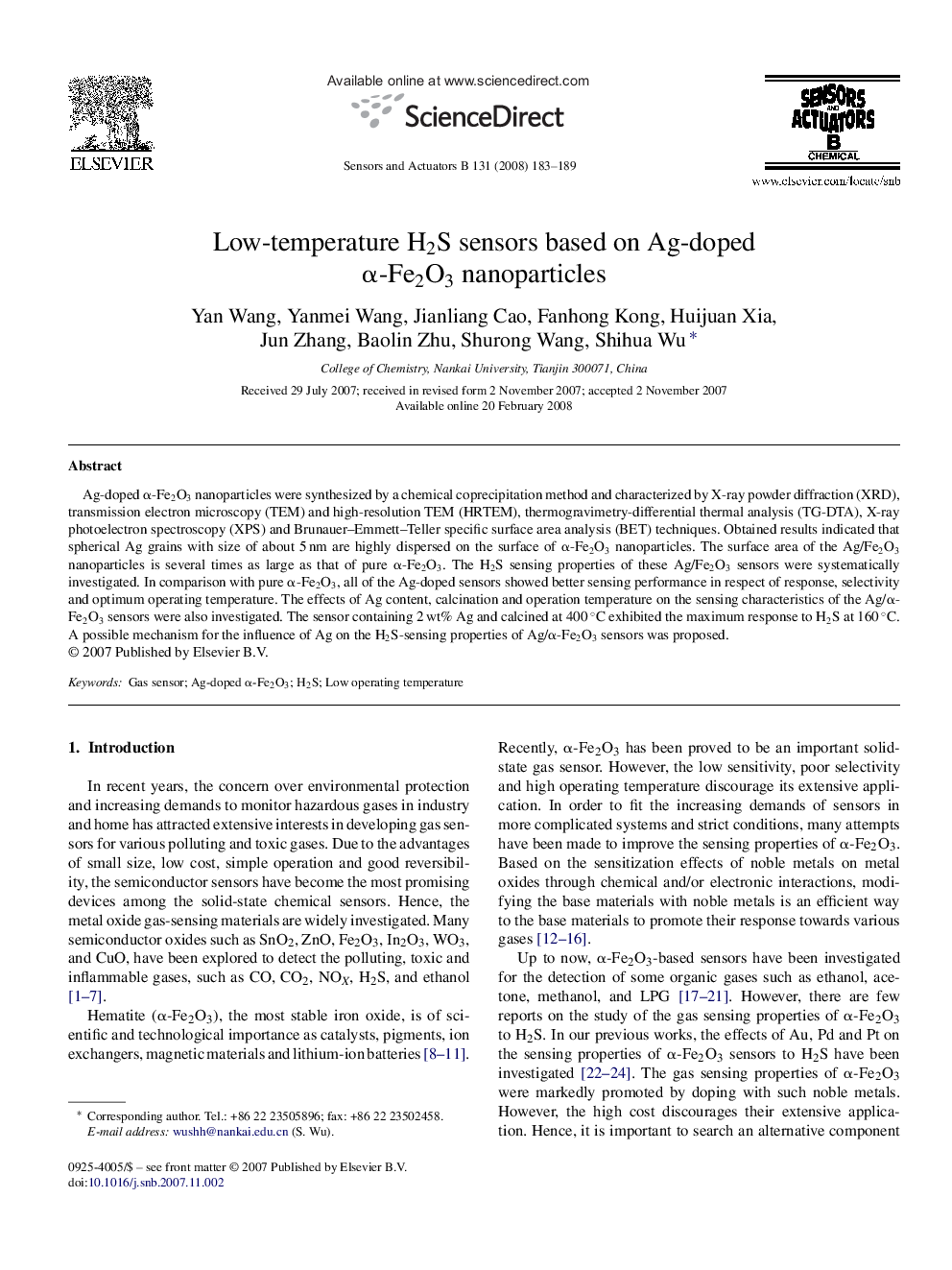| Article ID | Journal | Published Year | Pages | File Type |
|---|---|---|---|---|
| 741455 | Sensors and Actuators B: Chemical | 2008 | 7 Pages |
Ag-doped α-Fe2O3 nanoparticles were synthesized by a chemical coprecipitation method and characterized by X-ray powder diffraction (XRD), transmission electron microscopy (TEM) and high-resolution TEM (HRTEM), thermogravimetry-differential thermal analysis (TG-DTA), X-ray photoelectron spectroscopy (XPS) and Brunauer–Emmett–Teller specific surface area analysis (BET) techniques. Obtained results indicated that spherical Ag grains with size of about 5 nm are highly dispersed on the surface of α-Fe2O3 nanoparticles. The surface area of the Ag/Fe2O3 nanoparticles is several times as large as that of pure α-Fe2O3. The H2S sensing properties of these Ag/Fe2O3 sensors were systematically investigated. In comparison with pure α-Fe2O3, all of the Ag-doped sensors showed better sensing performance in respect of response, selectivity and optimum operating temperature. The effects of Ag content, calcination and operation temperature on the sensing characteristics of the Ag/α-Fe2O3 sensors were also investigated. The sensor containing 2 wt% Ag and calcined at 400 °C exhibited the maximum response to H2S at 160 °C. A possible mechanism for the influence of Ag on the H2S-sensing properties of Ag/α-Fe2O3 sensors was proposed.
